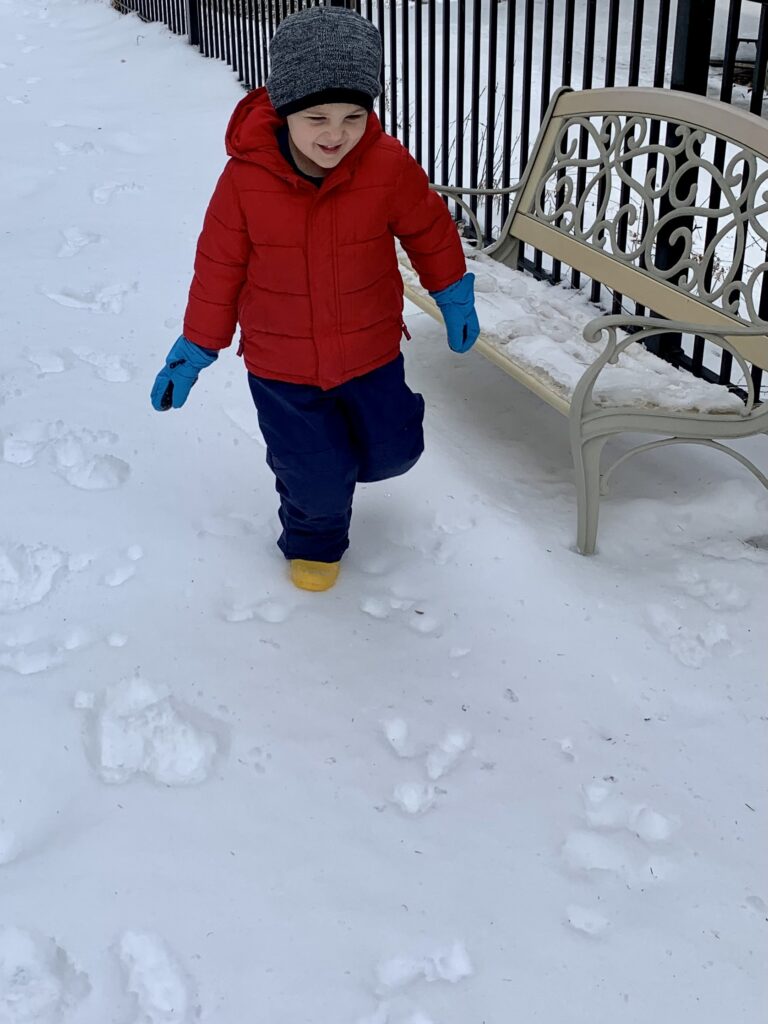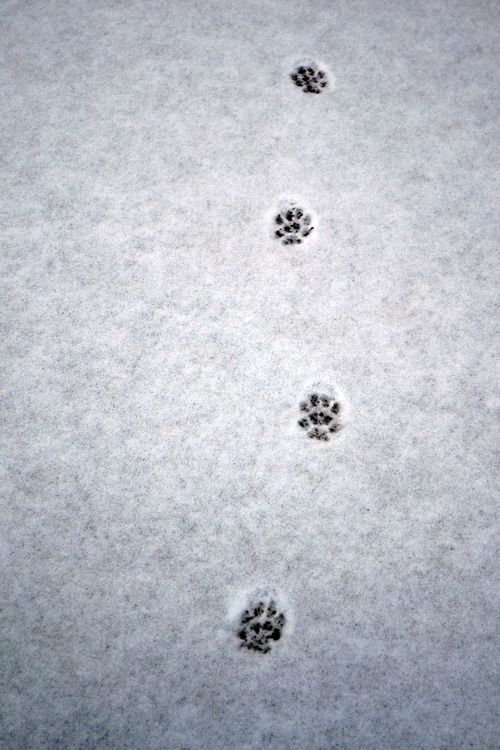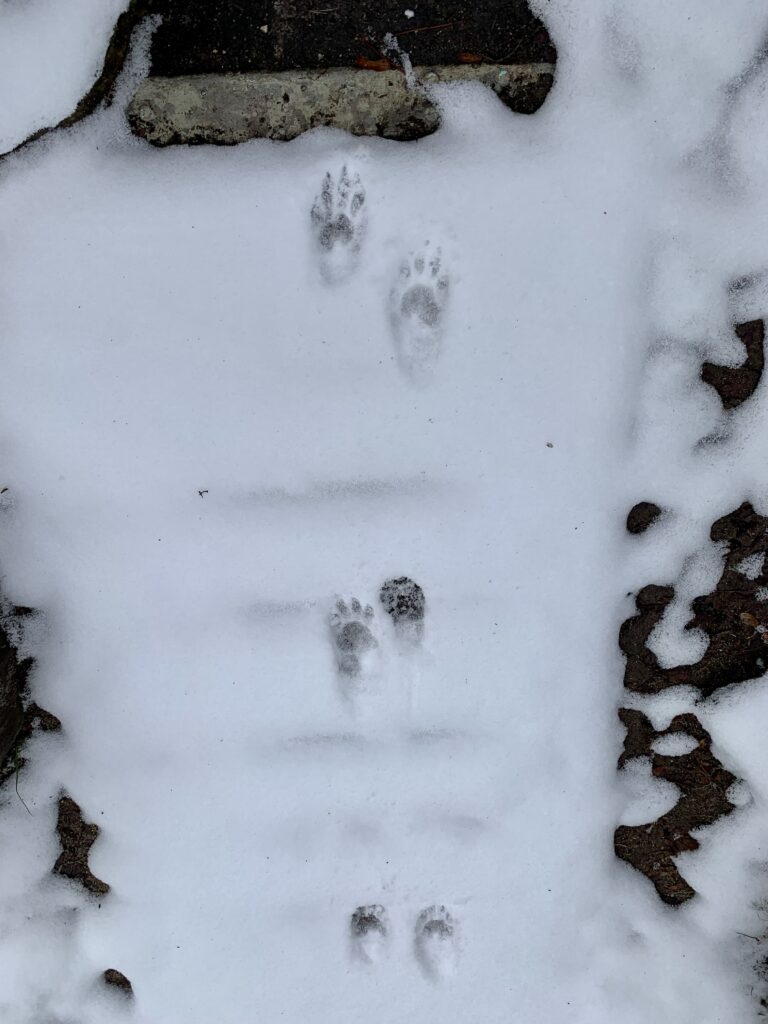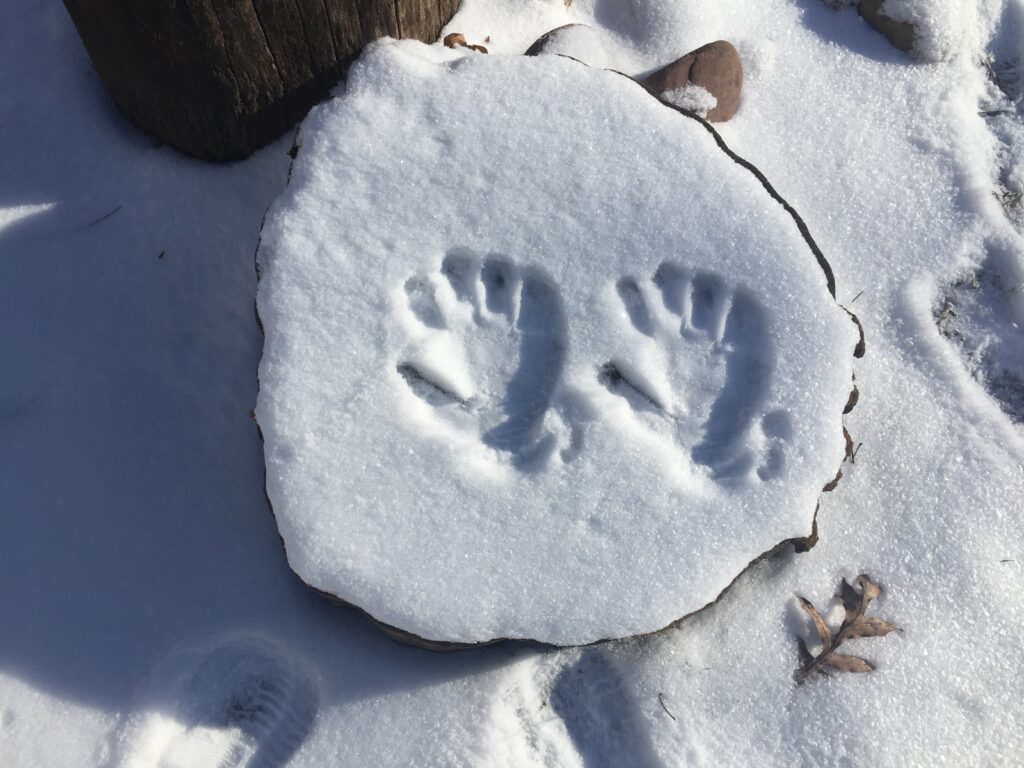Investigating Snow Tracks
“Hey, Hudson, look! Animal tracks! Let’s be detectives and see where they go!”
Hudson and James are on the hunt. It’s one of those peaceful, quiet winter mornings when freshly fallen snow blankets our outdoor area and muffles the sounds of the morning rush hour.
The sun is shining and the scene is so sparkly and magical that we can’t resist heading outside despite the freezing temperatures.

Morning is the best time of day to spot fresh tracks. The rising sun casts shadows that make the tracks easier to spot in the glistening snow—and you’re more likely to see the tracks of nocturnal animals such as raccoons and opossums, as well as the tracks of early risers such as squirrels, birds and rabbits.

We occasionally find paw prints from a raccoon or hoof prints from a deer, but most of the tracks that we find are made by neighborhood cats and dogs, as well as squirrels and birds.
“What kind of animal left these, do you think?” Hudson asks as he leans over to examine some mystery tracks in the snow. “I think it’s a cat, but maybe it’s a raccoon,” he muses out loud. “It’s not an opossum, right? I don’t see any tracks from a tail dragging in the snow.”
“I see a cat on Miss Mary’s porch step!” Jonah points out as he joins the STEM investigation. “I bet the tracks belong to that cat!”
“This track over here has four toes on the front feet and the back feet—and I think the cat steps his back feet on top of his front paws,” adds James. He examines the tracks more closely and confirms his hypothesis. “Yep! It’s the cat! Look at the toes: they are pointing that way. Let’s follow them!”
Soon our entire team of STEM investigators is clomping through the snow after James as he follows the paw prints.
We have plenty of wandering cats in our neighborhood. For years, we have engaged in follow-the-cat-print expeditions on snowy days, trying to figure out the exact route that the cat took and why. Today has ushered in a new season of snow—and a new season of animal tracking expeditions!
Young children instinctively seem to notice attributes such as the shape, size, length, or other characteristics of any object, including today’s paw prints. We follow the track routes while making observations and forming theories.
Curiosity, persistence, questioning, and problem-solving are the traits of a true scientist. These real-life adventures naturally add science to our play!

By following a few track patterns, we piece together the mystery of what these critters have been up to in our outdoor classroom.
Our focus is now very intentional and the mood has shifted from playful curiosity to deep observation and concentration. This is what child-led learning looks like.
Children develop their understanding of matching and patterns through experience. Because it’s difficult to consider a lot of attributes at once, children often begin to create sets by finding exact matches.
This helps build the foundation for basic math, science and engineering skills as the children observe and ask questions—all while solving the paw print mystery!

As we follow the tracks, the children find clues such as changes in direction and differences in the appearance of the prints. Why do the tracks look a little different now? The gait pattern offers clues about how the animal was moving. Was it running or walking?
These small details can convey a lot about the animal that left the tracks and what it was doing at the time. We don’t have paper and pencils to collect data outside today, but our friends are still forming hypotheses and making deductions as they piece the clues together.
We will pull out our tracking books when we return to the warmth of the classroom. But, for now, the species doesn’t matter as much as the experience of following the path and collecting clues. Our focus is not on what is being learned, but on the knowledge and insights that the children gain through investigative play.
If your STEM investigators begin to follow the tracks in your outdoor classroom, check to see If the tracks lead to a tree or another animal habitat. See if you can find a bird or squirrel nest. Look for rabbit tracks leading to spruce trees.
If you are walking around the neighborhood, you’re likely to see dog tracks on the sidewalks or the parkways. And if you find prints that look like the ones pictured below, you’ve just found evidence of some young children leaving their own “paw” prints in the snow!

Great learning articles
Great articles
We could do so much snow prints using different items and inside we could use flour to make tracks with
Good article
Good article to read
Great activity to engage young learners.
Fun activity
This is such a cute activity!
What a fun activity!
we have done this in my classroom during winter. the kids really enjoy trying to figure out what animal left the prints
so cool
This is cool in the morning to see all the snow.
The kids will love this activity!
Like this idea
Good ideas to think about
Great activity.
This is good to see the weather In the winter for the children.
great activities and investigation
how snow helps make footprints of all
We could make cards with the different footprints and make a memory game out of the animal footprints we.ve seen
Observing tracks in the snow is a fun and interesting way to discuss weather and seasons and what happens to the animals. Animal habitats and hibernation can be introduced.
observing track on snow its an engaging activities. children will be exploring and have a detective role
articles are great
Enjoyed the lesson with the animal prints in the snow.
Like the idea of a tracking notebook – could take pictures and keep a class book
Fun activity for little ones
Awesome activity.
You could also bring this activity inside. Sprinkle flour on the bare floor and make tracks in it with various items. Have the children follow the tracks to the prize.
Snow is a fun form of water and animal tracks can be used to talk about how to earth supports life, even in winter.
I can imagine the excitement of the children. Definitely will implement this into one of my lesson plans
This activity can also show kids what happens when the sun comes up and the snow melts.
An amazing way to make learning fun!
I got a lot of ideas for the next winter!
what a fun way to let children’s interests guide your lessons for the day and help children grow and develop early science learning concepts